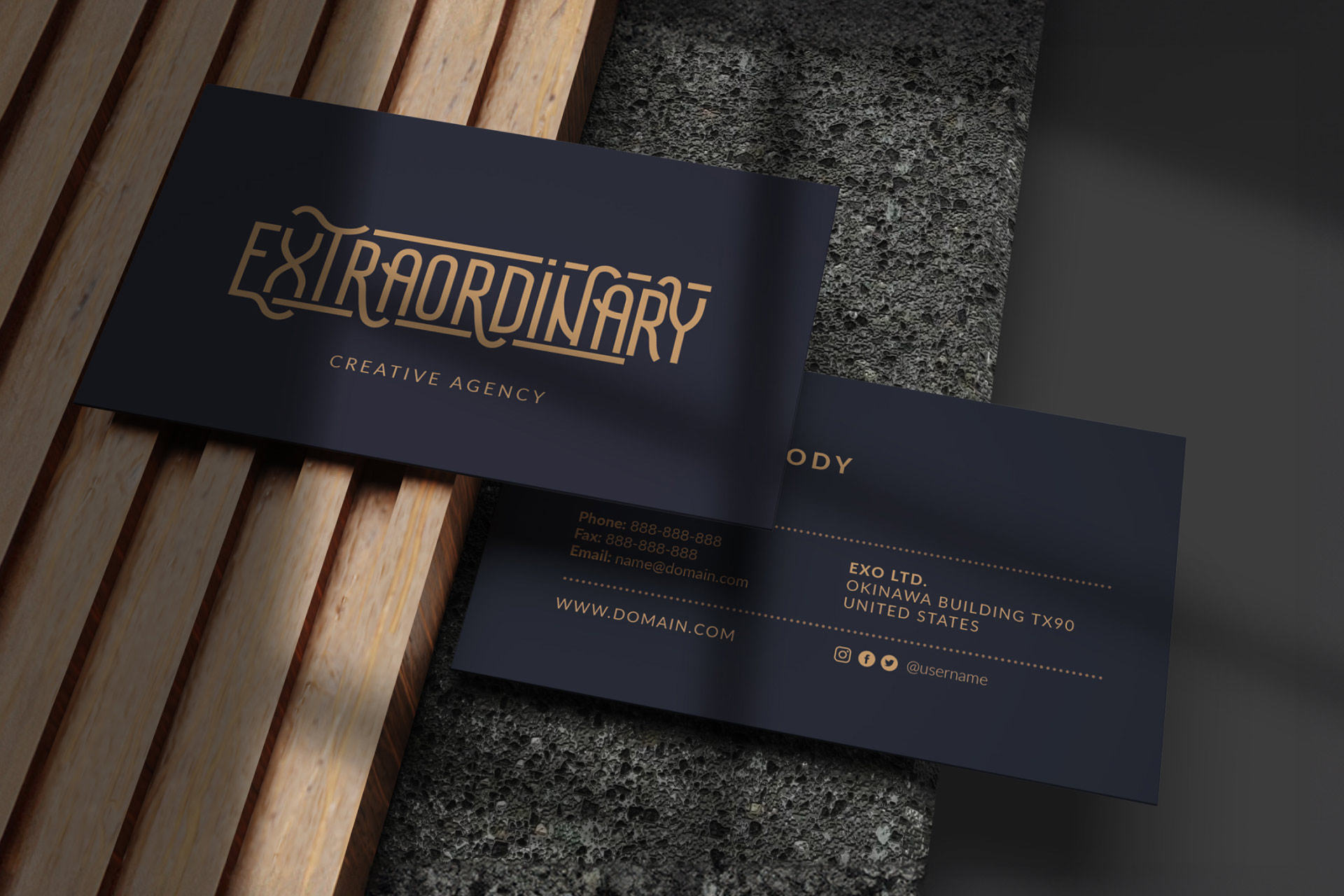Good Business Card Design: How to Impress Your Clients Instantly

In the bustling alleys of ancient China, merchants and traders exchanged “visiting cards” as a way to introduce themselves.
Fast forward a few centuries, and the relevance of business cards in today’s digital age remains undeniable. These small yet powerful tools continue to bridge the gap between the physical and digital realms.
Table of Contents
Importance of a Good Business Card Design
A good business card design isn’t just about sharing contact information. It’s about representing your brand identity, building relationships, and leaving memorable impressions.
Today, digital connections are made in seconds, the tangible nature of a business card offers a personal touch that’s hard to replicate online.
Essential Elements of a Business Card
Before diving into specifics, it’s crucial to understand the foundational pieces that compose a business card. These elements are the non-negotiables, the information that every card, regardless of industry or individual, should present.
- Name and Job Title: Your name and role are crucial. They instantly inform the holder about who you are and what you do.
- Contact Information: This includes your address, phone number, email, and perhaps even your website or LinkedIn profile.
- Company Logo: An easily recognizable logo can enhance brand recall.
- Slogan or Tagline: This gives a quick insight into your brand’s ethos or its value proposition.
Design Principles
Beyond the basic information, a business card must adhere to certain design principles to ensure its effectiveness. These principles govern the visual dynamics of your card and are critical in determining how it’s perceived by recipients.
- Simplicity: Good business card design is often minimalistic, keeping it clear and elegant.
- Hierarchy: The most critical information should stand out, making it easier to read and recall.
- Typography: A well-chosen font speaks volumes. It should be readable and in sync with your brand’s personality.
- Color Psychology: Colors evoke emotions. Choose shades that align with your brand and resonate with your target audience.
- Use of Space: A good balance between content and white space ensures clarity and avoids a cluttered look.
Unique Touches to Make Your Business Card Stand Out
In a sea of standard, run-of-the-mill business cards, certain enhancements can elevate your card’s status, making it not just a tool for information, but a memorable piece of tactile marketing.
- Material Choices: With options ranging from classic cardstock to transparent cards, the material you choose can make your card unforgettable.
- Embossing or Debossing: These printing techniques add depth, texture, and an element of luxury.
- Special Finishes: Techniques like foil stamping can make specific elements shine, literally and figuratively.
- Interactive Elements: Modern cards often incorporate QR codes linking to portfolios, augmented reality experiences, or digital vCards.
Common Mistakes to Avoid in Crafting a Good Business Card Design
- Information Overload: While you want your business card to be informative, cramming it with too much detail can be overwhelming and detract from its primary purpose. Keep it concise: include only essential information to maintain clarity and readability.
- Clashing Color Schemes: A good business card design should represent your brand’s visual identity with an appropriate color scheme. Avoid using colors that clash or are too harsh on the eyes, as this can detract from the card’s professionalism and legibility.
- Inadequate Font Size and Style: Tiny or illegible fonts are a common misstep. Your card’s text should be easily readable at a glance without straining the eyes. Similarly, avoid overly complex font styles that may obscure comprehension.
- Outdated Information: A business card with obsolete contact details is a missed opportunity. Ensure all information is current and consider including your LinkedIn profile or other professional social media handles for added connectivity.
- Neglecting the Backside: The back of your card is prime real estate for additional branding, a catchy tagline, or even a call-to-action. A good business card design leverages both sides to maximize impact and information relay.
- Ignoring Quality Materials: The tactile feel of a business card can speak volumes about your brand. Skimping on quality can lead to cards that bend, tear, or fade easily, negatively affecting your brand perception.
The Evolution of Digital Business Cards
As our world becomes more digital, so do business cards. Digital cards can be shared seamlessly online and can be updated easily, ensuring that you’re always sharing your most recent information.
Who to Hire to Design Your Business Card?
This is where the expertise of an on-demand design team or a dedicated unlimited graphic design service becomes invaluable.
Agency like TripleGrowth isn’t just about crafting impactful business cards design; their team offers a variety of graphic design services that elevate any brand. Engaging with them ensures a company’s designs stay current, reflecting the latest design trends. More importantly, maintaining a consistent design language across every brand touchpoint amplifies market presence.
Choosing TripleGrowth has big advantages. They help clients keep their business cards, marketing materials, and online visuals fresh and exciting, all without spending a lot. With one fixed monthly price, clients can get as many designs as they need, helping their brands look great all the time, without any surprise costs.
Is There Still a Need for Good Business Card Design?
Despite our digital-centric era, the tangible exchange of business cards retains its deep-rooted value. A good business card design is more than just a contact sheet; it’s your brand’s handshake, conveying your professionalism and eye for detail.
By integrating quality design with both classic and digital formats, your business card can continue to serve as a powerful tool for memorable introductions and prosperous relationships.
Bonus Tips: Once you have your perfect business card, think about distribution strategies. Always carry a few with you—opportunities can arise when least expected! And when you receive cards, use apps or tools to scan and organize them, ensuring you never lose a potential lead.
What makes a good business card design?
A good business card design effectively balances aesthetics and information. It should clearly display essential details like name, contact information, and brand logo while being visually appealing to leave a lasting impression.
How important is the material in a good business card design?
The material of a business card plays a significant role in the overall perception of quality and professionalism. Heavier cardstock, unique textures, or sustainable materials can enhance the tactile experience and reflect your brand’s values.
Can the color scheme impact the effectiveness of a business card design?
Absolutely. Colors not only catch the eye but also convey brand personality and stimulate emotional responses. A good business card design utilizes a color scheme that aligns with brand identity and is attractive to the target audience.
What information is essential for a good business card design?
Essential information on a business card includes your name, job title, company name, phone number, email address, and company logo. Including a physical address, website, or social media handles depends on your business type and personal preference.
How does a good business card design benefit networking?
A good business card design is an integral networking tool, providing a tangible reminder of an encounter and offering the recipient a quick snapshot of your professionalism and brand identity.
Is investing in a unique business card design worthwhile?
Yes. Investing in a unique business card design can set you apart from competition, showcase creativity, and make a memorable impact, which is particularly important in industries that value innovation and branding.
How much does it cost to design a business card?
The cost of designing a business card can vary significantly based on several factors, including the complexity of the design and the expertise of the designer. On average, a professional design can range from $100 to $500 for the design alone, while custom options and high-end materials can increase the cost. It’s important to balance budget considerations with the need for a high-quality representation of your brand.


